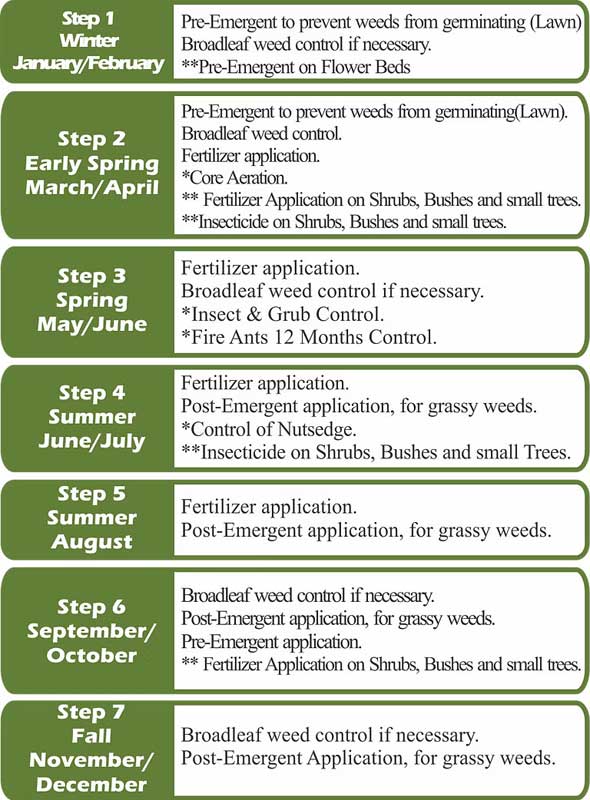Lawn Care & Weed Control Services
The Importance of Feeding Your Lawn
A well-fed lawn is the key to maintaining a healthy, vibrant, and resilient landscape. Proper nutrition strengthens the root system, allowing your lawn to withstand heat, cold, drought, foot traffic, and mowing stress.

At R&A Landscaping, customer satisfaction is our top priority. We achieve this by delivering superior service, high-quality products, and competitive pricing. As a locally owned company, we specialize in residential and commercial lawn care, helping you achieve a lush, green, and healthy lawn.

We use only professional-grade, safe products, prioritizing the well-being of your children and pets.
Weed Control & Fertilization Services
Pre-Emergent Weed Control
Pre-emergent herbicides prevent weeds before they grow, forming a protective barrier in the soil. These herbicides stop weed seedlings from developing by inhibiting root growth, causing them to die shortly after germination.

- Does not control established weeds
- Most effective when followed by ½ inch of water
- Prevents common weeds from sprouting in your lawn
A well-timed pre-emergent application ensures a healthier lawn by eliminating weeds before they become a problem.
Post-Emergent Broadleaf Weed Control
Broadleaf weeds are some of the most common and recognizable lawn invaders. They typically have wide, flat leaves that grow in pairs or multiples along a stem.

- Examples of Broadleaf Weeds: Dandelion, Clover, Chickweed, Spurge, Wild Violet
- Application Timing: Applied after weeds have sprouted and are actively growing
A targeted post-emergent herbicide effectively eliminates broadleaf weeds while preserving your lawn’s health.
Fertilization for a Healthier Lawn
Fertilization is essential for plant growth, providing key nutrients that promote a lush, green, and resilient lawn. Fertilizers are applied through the soil for root absorption or sprayed for foliar feeding.

Key Nutrients in Fertilizers (N-P-K):
- Nitrogen (N): Stimulates strong leaf and stem growth, enhancing the lawn’s green color
- Phosphorus (P): Supports early root development and plant establishment
- Potassium (K): Protects against diseases, improves drought resistance, and enhances cold tolerance
Proper fertilization keeps your lawn, garden, and soil looking their best, ensuring year-round health and beauty.
Achieve a Healthier, Greener Lawn with R&A Landscaping
We are committed to delivering professional, effective, and safe lawn care solutions. Whether you need weed control, fertilization, or general lawn maintenance, our team is here to help.
Contact us today to schedule your service and give your lawn the care it deserves!
